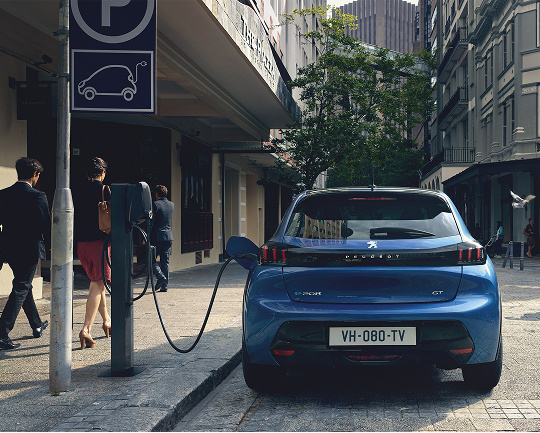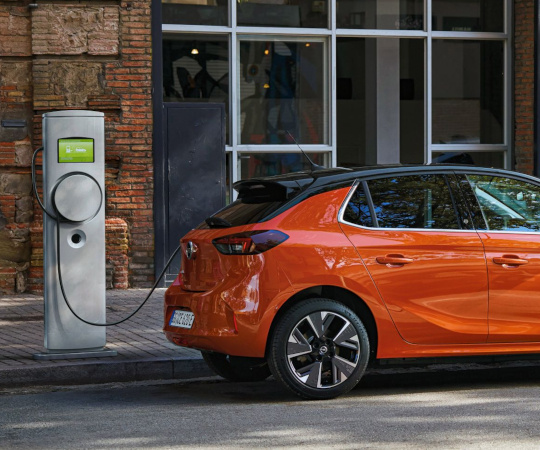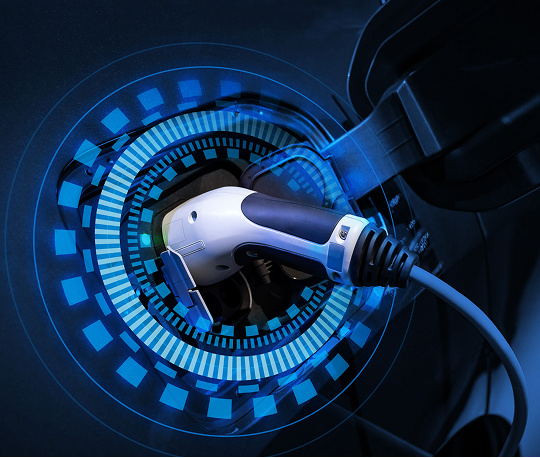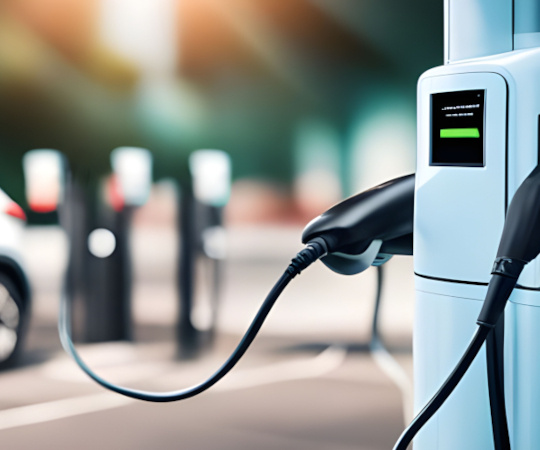There are different ways of charging an electric vehicle.
This will depend on where you are. You can charge your vehicle at work or at home. You can also charge it on the go.

This will depend on where you are. You can charge your vehicle at work or at home. You can also charge it on the go.

It goes without saying that a home charging system offers superb convenience for electric vehicle drivers.

There's no need to worry about safety, either: charging stations have 'Dynamic Load Balancing', a system that prevents overloading while you run other electronic devices in your household. This means the car will charge optimally, just a little slower in the event of a peak in consumption.
In most homes, it is easy to connect a home charger to the network. To find out whether it is possible to install a charging station at home, Leasys calls on diego Luxembourg and its network of approved installers to analyse (digitally by default) your electrical installation and assess the technical feasibility of such an installation. This is what we call the home check.
In that case, arranging a private charging point is generally not a problem. The technical specifications are reviewed during the home check when you apply.
In that case, the process involves several parties: the association of co-owners and the building manager (syndic). It may also be necessary to provide additional facilities in the building's garage to enable data exchange with the charging point.
In that case, the process involves several parties: the association of co-owners, the building manager, the property owner and the tenant. You will need permission from both the property owner and when applicable the association of co-owners and the building manager to install a charging station. This means you need take into account a longer lead time. The supplier will always visit the site. It may also be necessary to provide additional facilities in the building's garage to enable data exchange with the charging point.
In most cases, you can charge at a public charging point near your home.

For the driver, charging his electric car at work has many advantages. For example, the electricity price is often lower than at home or on the go, and it is convenient for the driver to charge the car at work when it is parked anyway.
If you are a fleet manager and you want to provide a charging solution at work, we will be happy to get you moving.
If you want to charge your electric car or plug-in hybrid on the go, you can use public charging points. You will need a charge card for this. We offer a charge card, which can be used at work and at public charging stations.

Your charge card gives you access to an extensive network of public charging points in Europe. There are currently more than 150,000 public charging stations in Europe: more than 53.000 in France, 65.000 in Germany, 8.000 in Belgium and 1.400 in Luxembourg. You'll always find a charging station near you.
The charge card can be used with a mobile app for Android and Apple phones. Several applications exist that show you available charging points and can be used to start and stop charging sessions and offer many other features.

How does a public charging station work?
Prices vary depending on the charging point. Depending on the charging station operator, prices can be based on:

Starting fee (one-off): an amount charged at the start of each session. Starting fees can be combined with other pricing models.

Time-based charging (per minute): you will receive an invoice based on the time your car was connected to the charging point. This means you continue to pay when your car has completed charging but remains at the charging station. The Leasys app will show a notification for this type of charging point to warn you that you will continue to be charged even when the car has finished charging.

Charging based on kWh and time: your invoice is based on your kWh consumption in combination with your parking time at the charging station.
This interactive map shows you all the electric charging stations in Europe with details on the connector type, charging speed, rates and payment methods.
Simply click on each station icon for more information.
 If the icon is green, the charging station is available.
If the icon is green, the charging station is available. If it is red, it is busy or out of use.
If it is red, it is busy or out of use. Grey means that we do not have up-to-date information on this charging station.
Grey means that we do not have up-to-date information on this charging station.If you have not been able to charge your car (sufficiently) at work or at home, you may need to quickly charge your car on the go. You can do this at various rapid charging stations along the motorway

Rapid charging is very similar to normal charging. As the name suggests, they simply work faster. A major difference with normal charging is the use of direct current (DC). With DC power, the charging station can charge the battery directly. This allows much higher charging speeds than alternating current.

The Tesla Superchargers are the best-known example. There are also the Ionity or Fastned networks, for example.
The main features of rapid charging are:

Charging up to 80% in half an hour

Use of the charging station's cable rather than the car's own cable

DC charging rather than AC charging

If you are driving a Tesla, you can use Tesla's vast Supercharger network throughout Europe. The car's navigation system will automatically find the charging points on your route. You do not need a charge card to charge at Tesla charging stations. Everything will be done automatically via your Tesla account. Do bear in mind that the costs will be charged to your Tesla account (and the associated payment method).
Other electric cars can use the IONITY network, a European charging network of over 300 ultra-rapid chargers that allow long distances to be travelled within Europe.

If you are driving your electric car abroad, we recommend that you keep up to date with the country's charging infrastructure. Make sure your itinerary includes the necessary stops to recharge your car. In addition to the car's own navigation system, there are many different apps that can help you to get to your destination abroad in your electric car and that allow you to prioritise your favourite networks for example, such as “A Better Route Planner”.
Be aware that you do need to talk to your employer in advance to know who will cover the charging costs abroad.
Not convinced about heading off on holiday in an electric car? No problem: Leasys has a solution that enables you to enjoy the many advantages of electric driving for the rest of the year. You can exchange your electric vehicle for a Holiday Car – a temporary lease with a conventional engine, available as an option, that you can use specifically for your trip.

Your lease car is temporarily exchanged for a Holiday Car with a traditional combustion engine, so you can say goodbye to range anxiety during your holidays.

The Holiday Car is an optional service included in the monthly lease price of the lease car.

You can choose between 3 categories:
Fill in the form and we will get back to you within 48 hours